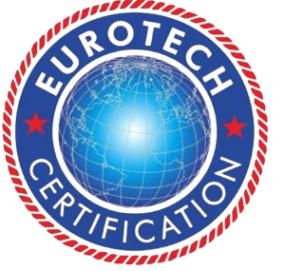What is CE Marking?
The CE marking, established in 1985, signifies that a product complies with relevant EU legislation, ensuring its free movement within the European Economic Area (EEA). The letters “CE” stand for “Conformité Européenne,” which means “Conformity with Europe” in French. This marking is found on a wide range of products, from household electronics to toys, indicating they meet stringent safety, health, and environmental protection requirements set by the EU.
#### Why CE Marking Matters
– **Global Market Access**: CE marking is mandatory for certain products within the EEA, Switzerland, and Turkey, enabling your product to be marketed and sold across these regions without restrictions.
– **Assured Quality and Safety**: It demonstrates that your product has been evaluated and meets EU safety, health, and environmental protection standards.
– **Consumer Confidence**: CE marking increases consumer trust, showing that your product is reliable and compliant with EU regulations.
– **Fair Competition**: Ensures all manufacturers adhere to the same regulations, promoting fair competition and high standards across the market.
#### Benefits of CE Certification
– **Free Market Movement**: Ensures the unrestricted sale of products within the EU and EFTA countries.
– **Legal Requirement**: Mandatory for products sold within these regions, showing compliance with EU technical legislation.
– **Product Passport**: Acts as a product passport, facilitating easier entry into the European market.
– **Initial Quality Indicator**: Indicates that your product meets essential quality standards from the outset.
– **Norm Compliance**: Provides a legal basis for product acceptance in EU countries, demonstrating adherence to New Approach directives.
#### Where is CE Marking Required?
CE marking is required for specific product groups within the European Economic Area (EEA), including the 27 EU member states and EFTA countries (Iceland, Norway, Liechtenstein), as well as Switzerland and Turkey. Manufacturers of products within these regions, and importers of products from outside these regions, must ensure compliance with CE marking standards.
#### Which Products Require CE Marking?
CE marking is necessary for products manufactured according to the following directives:
– **Machinery Directive** – 2006/42/EC
– **Low Voltage Directive (LVD)** – 2014/35/EU (replacing 2006/95/EC)
– **Electromagnetic Compatibility (EMC)** – 2014/30/EU (replacing 2004/108/EC)
– **Medical Devices Regulation (MDR)** – 2017/745
– **Personal Protective Equipment (PPE)** – 2016/425/EU
– **Construction Products Regulation (CPR)** – 305/2011/EU
– **Pressure Equipment Directive (PED)** – 2014/68/EU (replacing 97/23/EC)
– **Radio Equipment Directive** – 2014/53/EU (replacing 1999/5/EC)
– **Restriction of Hazardous Substances (RoHS)** – 2011/65/EU
– **Toys Safety Directive** – 2009/48/EC
For a comprehensive list of regulations, visit [EU CE Marking Requirements](https://single-market-economy.ec.europa.eu/single-market/ce-marking/manufacturers_en.
#### Conformity Assessment Modules
The CE marking system employs a modular approach to conformity assessment, covering both design and production phases. The modules include:
– **Module A, A1, A2**: Internal production control
– **Module B**: EU-type examination
– **Module C, C1, C2**: Conformity to EU-type based on internal production control
– **Module D, D1**: Conformity to EU-type based on quality assurance of the production process
– **Module E, E1**: Conformity to EU-type based on product quality assurance
– **Module F, F1**: Conformity to EU-type based on product verification
– **Module G**: Conformity based on unit verification
– **Module H, H1**: Conformity based on full quality assurance
#### How Long Does Certification Take?
The duration of obtaining a CE certificate varies based on the product, regulatory requirements, company preparedness, and ongoing conditions. To expedite the process, manufacturers should be well-informed about their product’s requirements and ensure all prerequisites are met before applying for certification.
#### Manufacturer Responsibilities
Manufacturers must complete all conformity assessment procedures, including testing, inspection, and certification, before placing products on the market. Key responsibilities include:
– Identifying relevant directives and harmonized standards.
– Determining the appropriate conformity assessment module.
– Conducting product conformity assessments.
– Preparing technical documentation.
– Issuing the EU Declaration of Conformity.
– Affixing the CE marking to products.
#### How to Affix CE Marking
The CE marking consists of the letters “CE” and must be affixed visibly, legibly, and indelibly on the product, its packaging, or accompanying documents. The marking should be at least 5 mm in size and maintain the proportions shown in their CE marking document.
#### Relationship with Quality Management Systems
While the CE mark itself does not directly relate to Quality Management Systems (ISO 9001), it signifies that a product complies with EU New Approach Directives and relevant harmonized European Standards. For some product groups, a Quality Management System may be required as part of the modular system.

